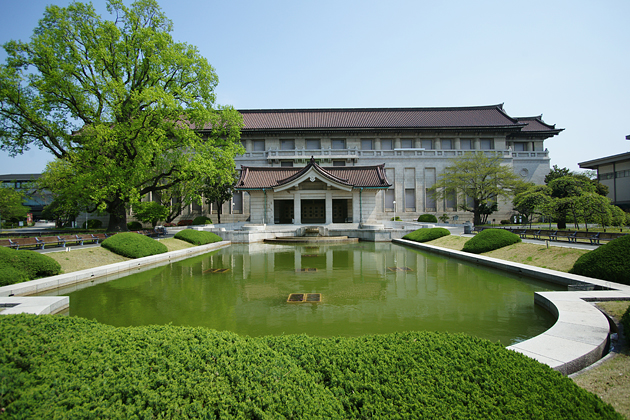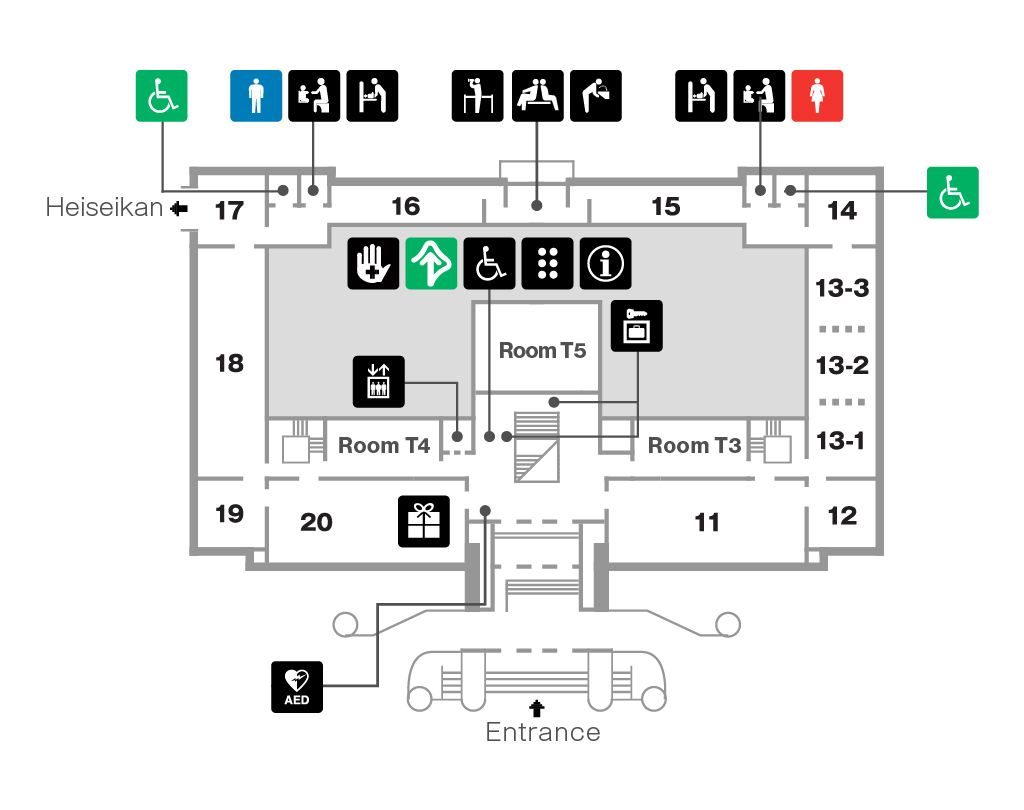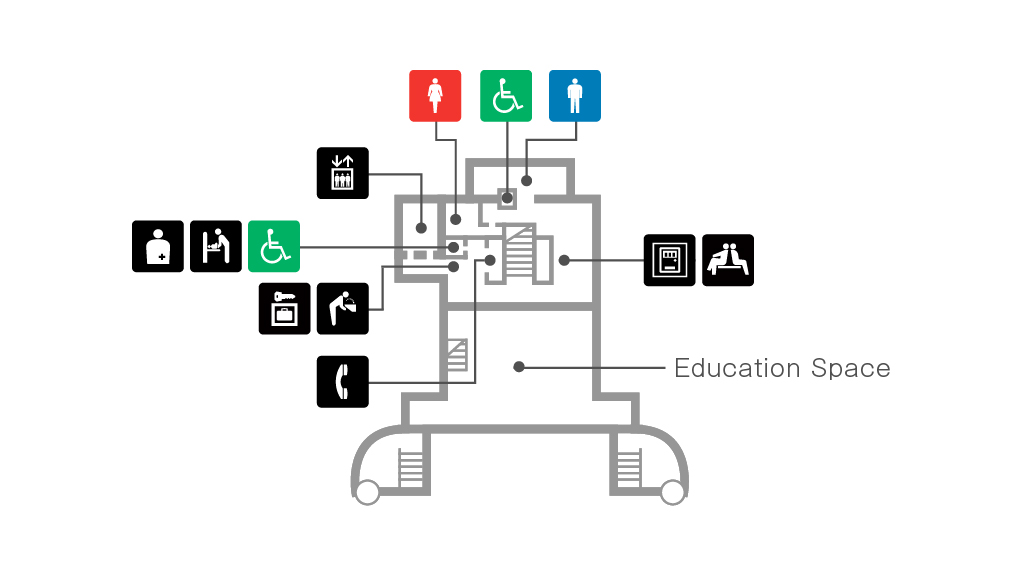Honkan (Japanese Gallery)

The original Japanese Gallery (designed by the British architect Josiah Conder) was severely damaged in the Great Kanto Earthquake of 1923. In contrast with the original building's more western style, the design of the present Honkan by Watanabe Jin is the more eastern "emperor's crown style". Construction began in 1932, and the building was opened in 1938. The displays provide a general view of Japanese art. It contains 23 exhibition rooms on two floors, "Highlights of Japanese Art," chronological exhibitions from 10000 B.C. to the late 19th century on the second floor, and exhibitions of each type of art, such as ceramics, and swords, thematic exhibitions and the donations gallery are on the first.
1F

| 11: | Sculpture |
| 12: | Lacquerware |
| 13-1: | Metalwork |
| 13-2: | Swords |
| 13-3: | Ceramics |
| 14: | Thematic Exhibition |
| 15: | Records of History |
| 16: | Ainu and Ryūkyū |
| 17: | Conservation and Restoration |
| 18: | Art of the Modern Era | Late 19th–first half of 20th century |
| 19: | Education Space |
| 20: | Museum Shop |
2F

| 1-1: | Ancient Art | Ca. 11,000 BC–7th century AD |
| 1-2: | The Arrival of Buddhism | 6th–8th century |
| 2: | National Treasure Gallery |
| 3-1: | The Arts of Buddhism | 8th–16th century |
| 3-2: | The Arts of the Imperial Court | 8th–16th century |
| 3-3: | Zen and Ink Painting | 13th–16th century |
| 4: | Tea Ceremony |
| 5&6: | Arms and Armor of the Samurai | 12th–19th century |
| 7: | Paintings on Folding Screens and Sliding Doors | 16th–19th century |
| 8-1: | Decorative Arts | 16th–19th century |
| 8-2: | Painting and Calligraphy | 16th–19th century |
| 9: | Performing Arts |
| 10: | The Art of Fashion | 17th–19th century The Art of Ukiyo-e | 17th–19th century |
| the Imperial Lounge: | The Japanese Emperor's Palanquins |
B1F



